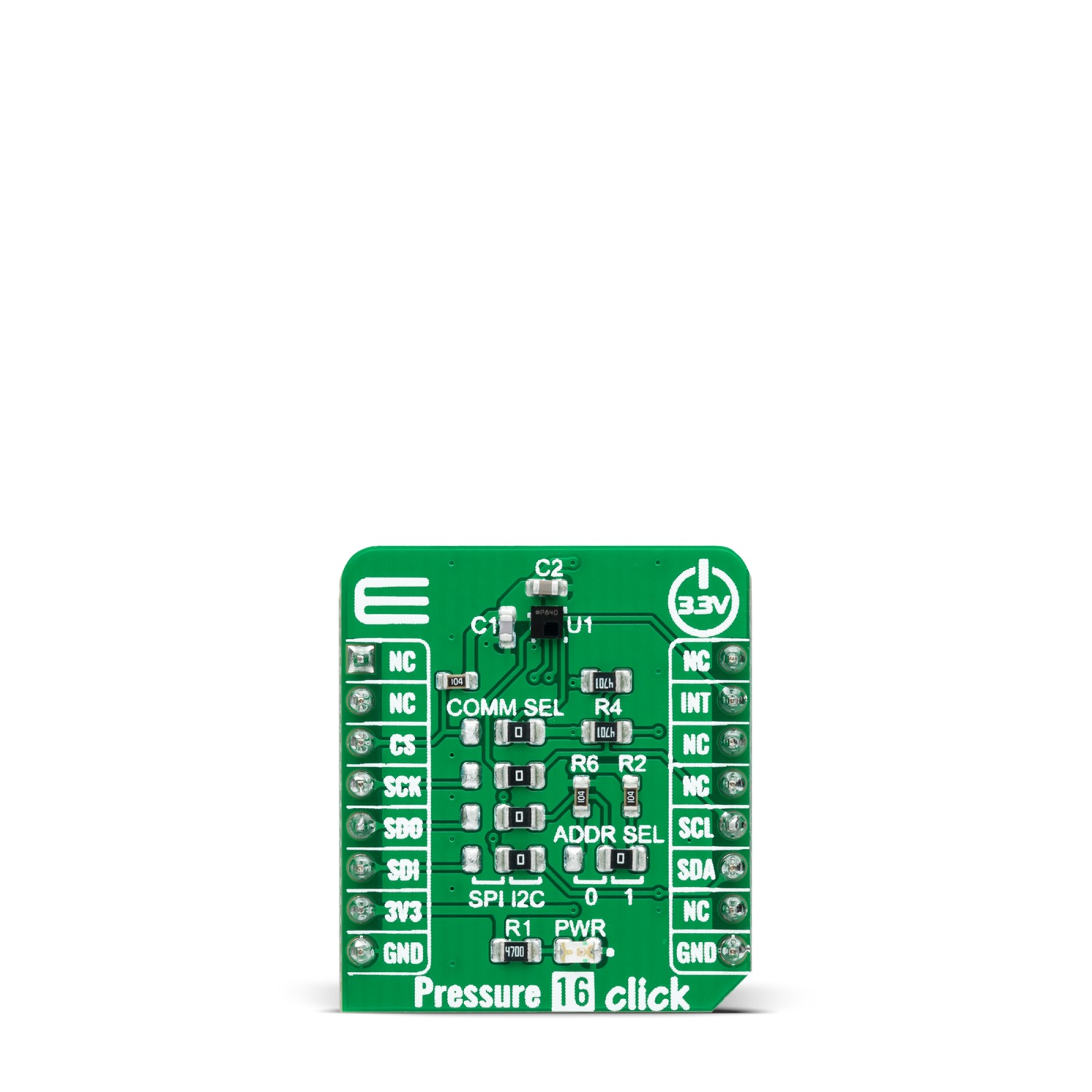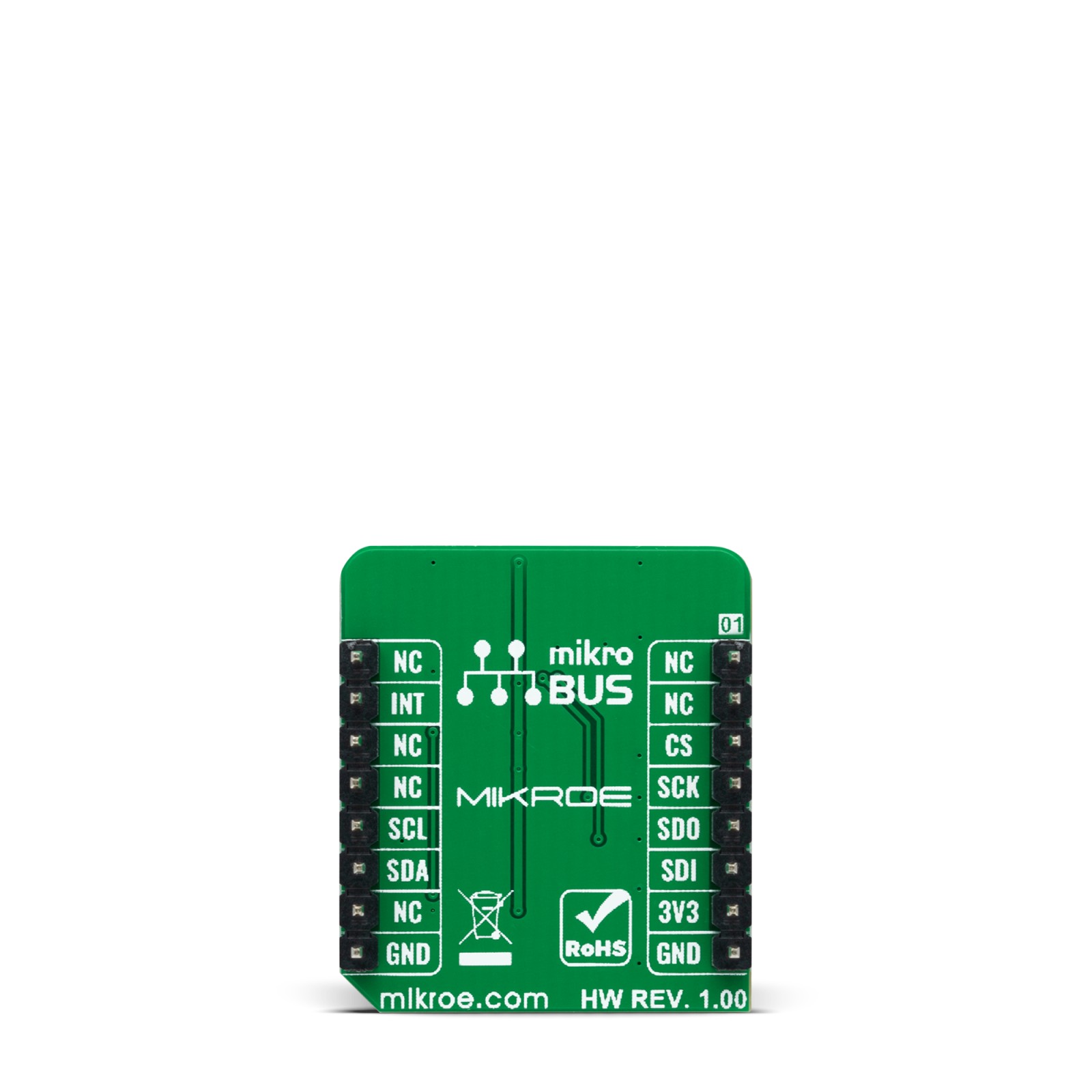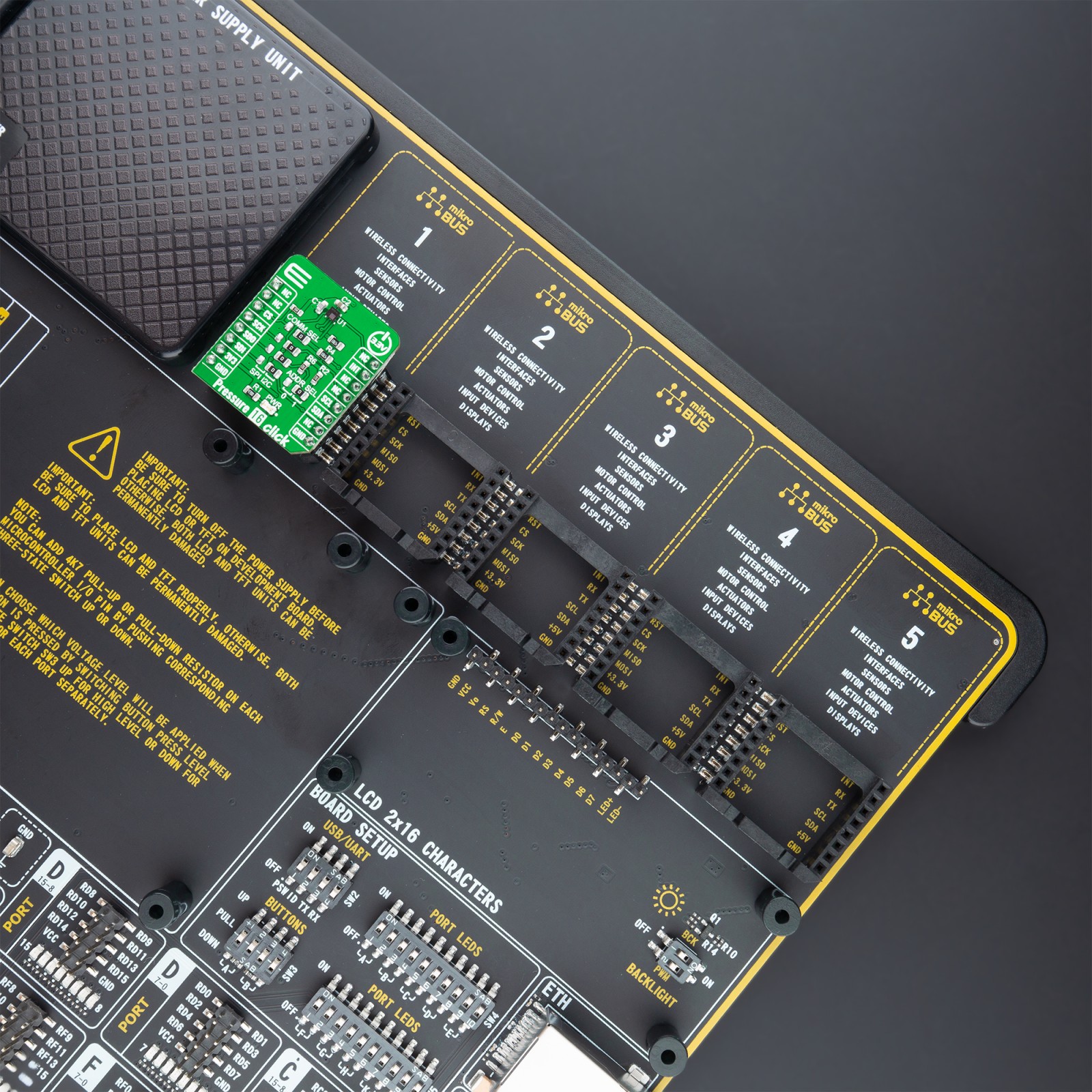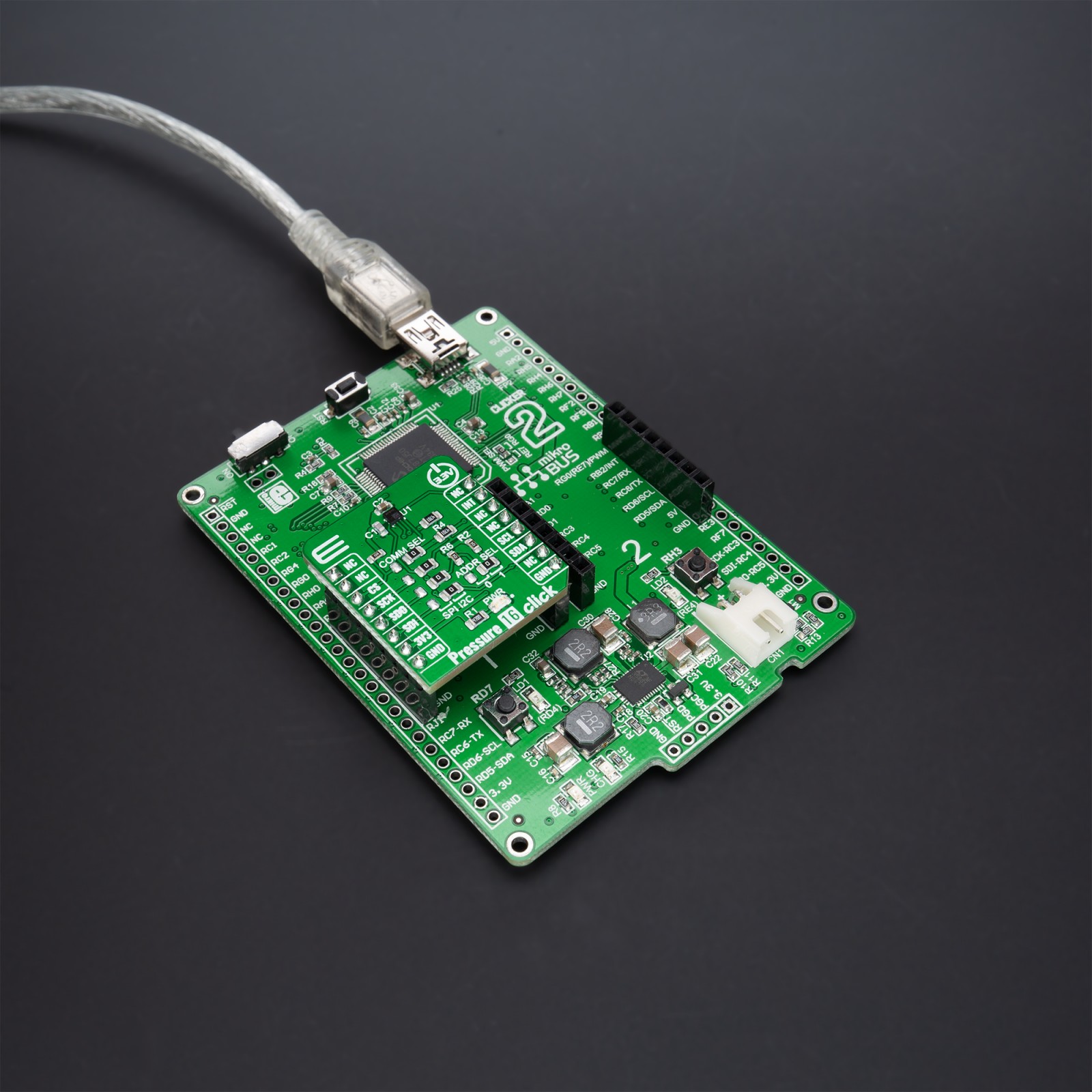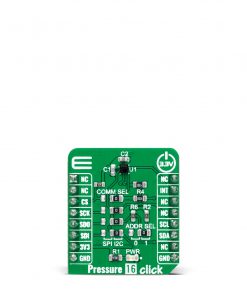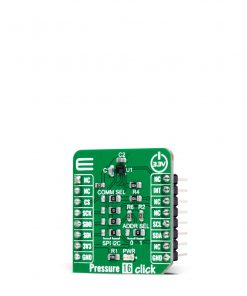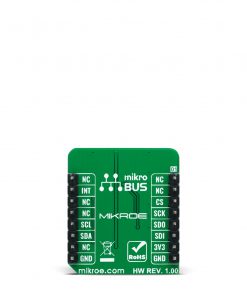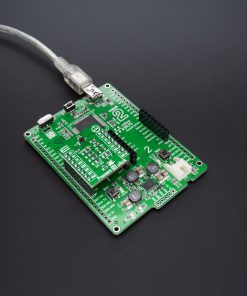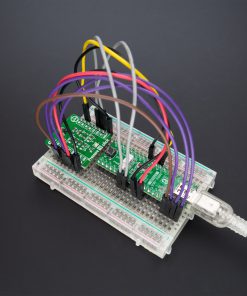Pressure 16 Click
R355.00 ex. VAT
Pressure 16 Click is a compact add-on board that contains a board-mount pressure sensor. This board features the WSEN-PADS (2511020213301), a high-precision MEMS-based digital absolute pressure sensor from Würth Elektronik. It has a fully-calibrated 24-bit pressure output to provide accurate atmospheric pressure data with a configurable host interface that supports both I2C and SPI serial communication and with an intelligent on-chip motion-triggered interrupt feature. This Click board™ is suitable for weather station equipment, altimeter and barometer applications, industrial, consumer applications, and many more.
Pressure 16 Click is supported by a mikroSDK compliant library, which includes functions that simplify software development. This Click board™ comes as a fully tested product, ready to be used on a system equipped with the mikroBUS™ socket.
Stock: Lead-time applicable.
| 5+ | R337.25 |
| 10+ | R319.50 |
| 15+ | R301.75 |
| 20+ | R290.39 |

